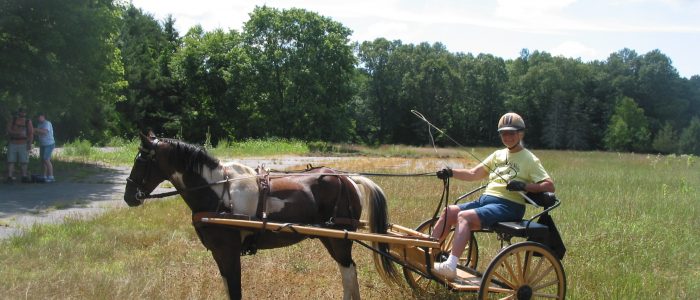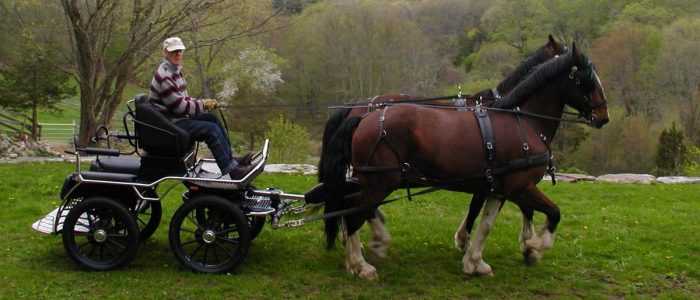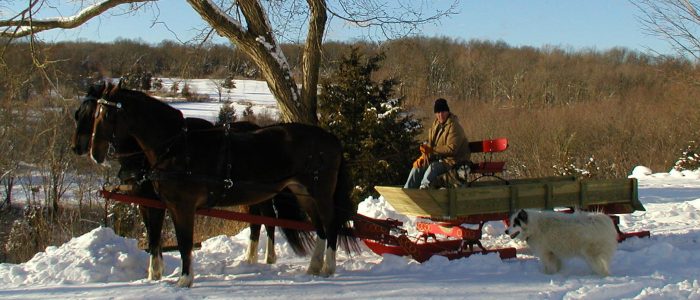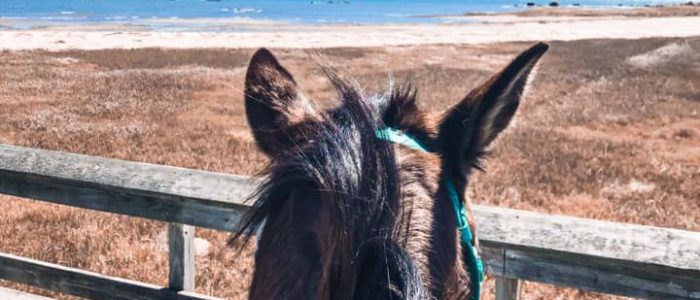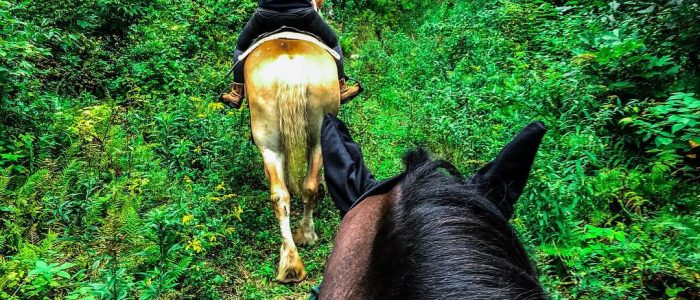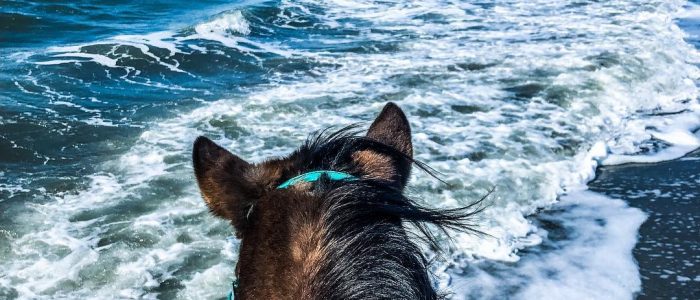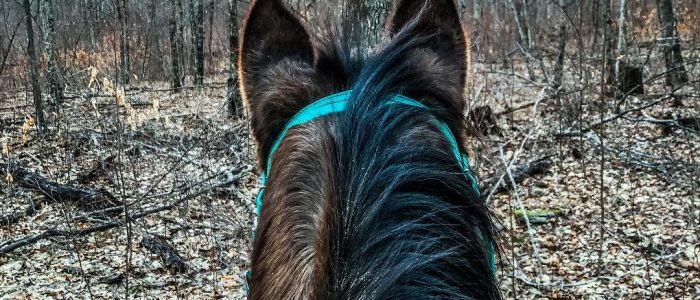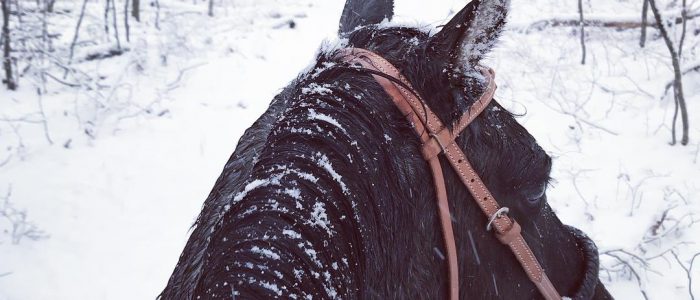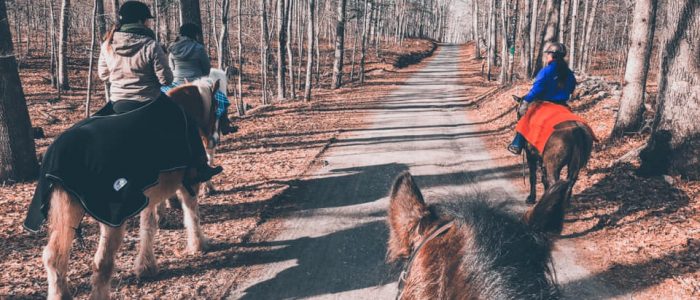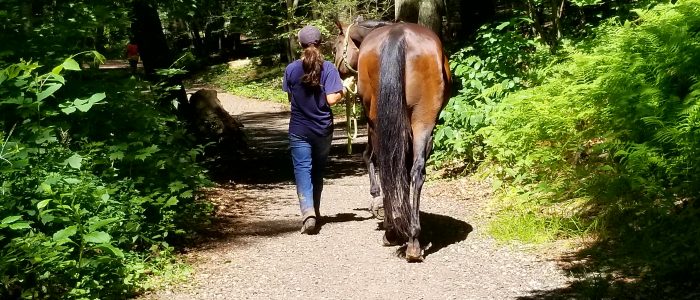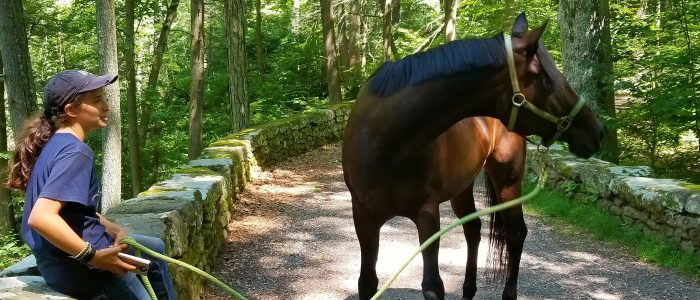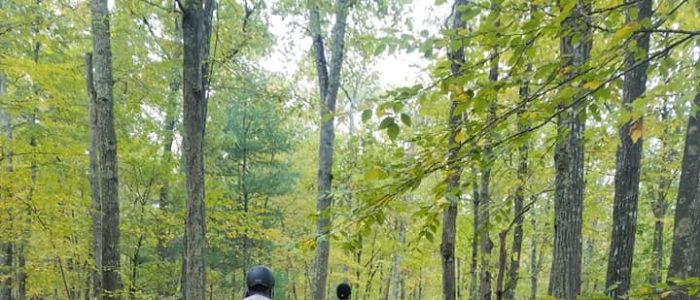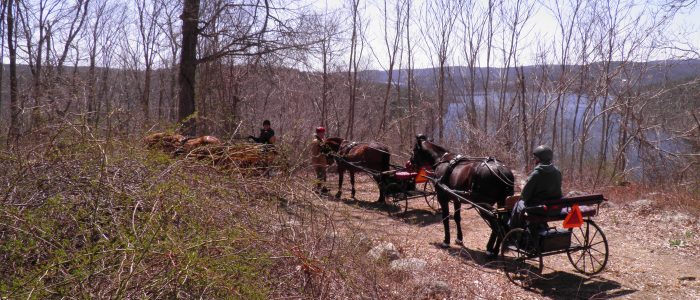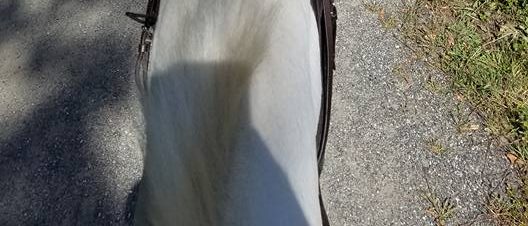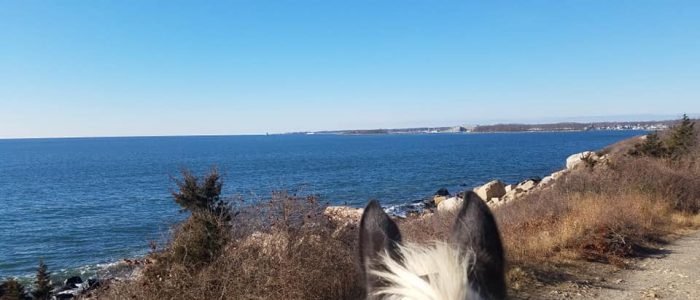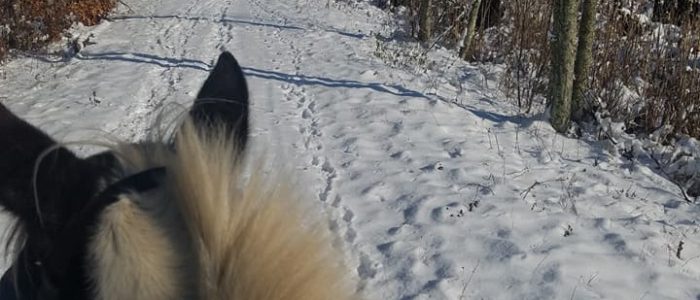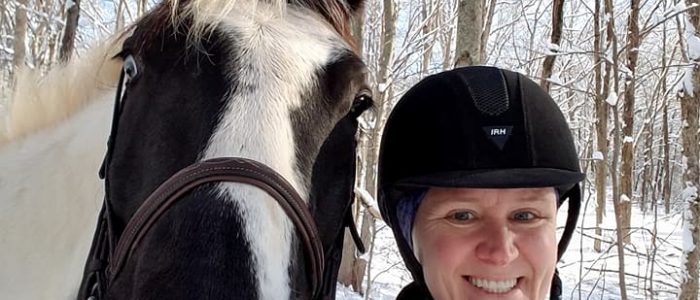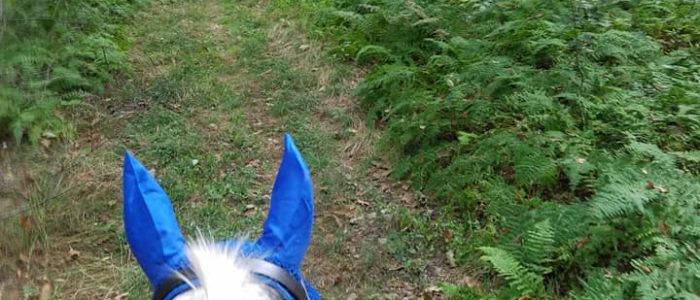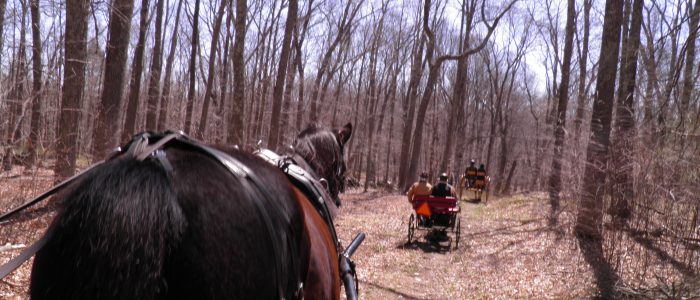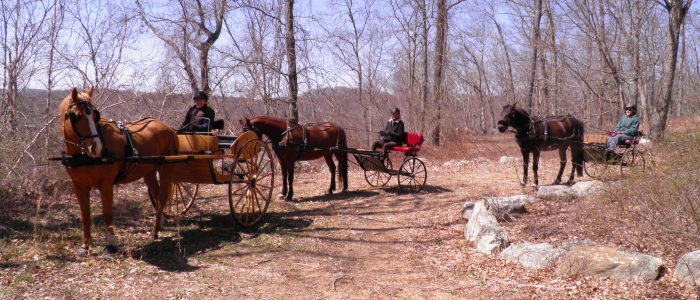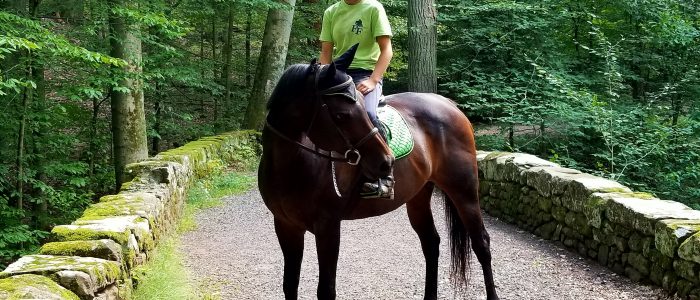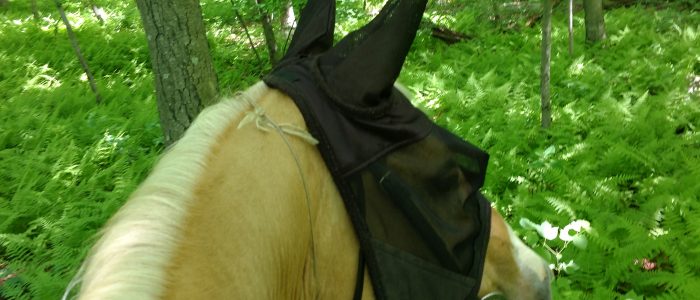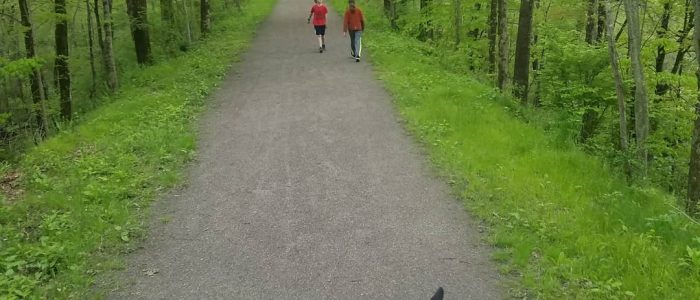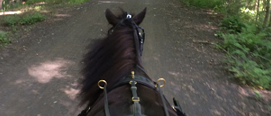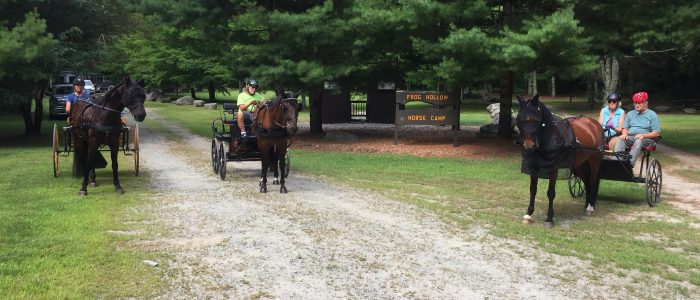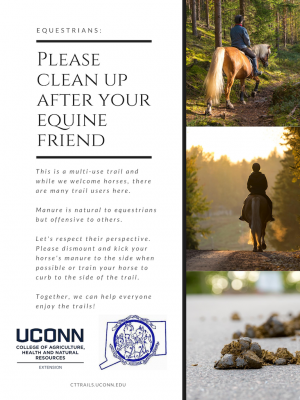Trail Safety & Etiquette Guidelines for Trail Users
On the trail, courtesy is a necessity
- If you ride a bike, you must yield to everyone.
- If you are hiking or walking around, you must yield to horses.
- If you ride a horse, you have priority but should observe caution because not all trail users will be aware of this.
- If you are unsure of how to approach a horse on the trail, these guidelines can help.
The more we strive to apply common sense rules of courtesy and etiquette, the better the chances of a safe and stress-free ride.
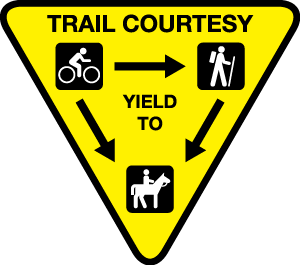
https://www.fs.usda.gov/detail/btnf/recreation/?cid=fseprd509212
Leave No Trace Principles
These principles1 are valid for different activities, ecosystems and environments. Since 1994, the Leave No Trace Center for Outdoor Ethics, also known as Leave No Trace, aims to inform visitors of their recreational impact on nature to prevent and minimize it.
Plan Ahead and Prepare1,2
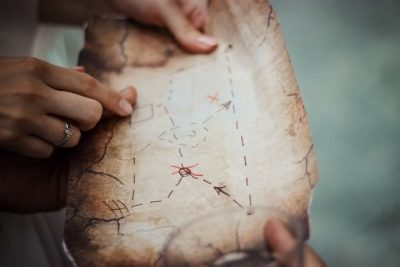
You must have a map, brochure and/or other information about the place before going. Don’t rely on people who come with you. If this person has an accident, you must fend for yourself.
– Be aware of trail warnings and closures. A path that you used to take could be modified or closed.
– Check the weather forecasts!
– Prepare your horse for the sights, sounds or obstacles you may encounter on the trail. For example, you can desensitize him at home using balloons, plastics tarps, bicycles and so on. Above all, teach him to trust you and control his fears.
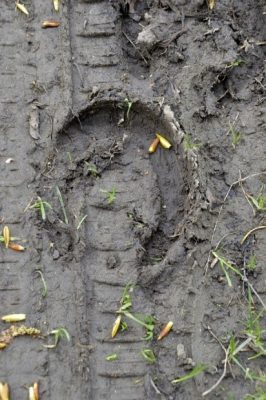
Travel on Durable Surfaces2,3
Be aware of mud and avoid causing ruts. Don’t exacerbate the situation by developing parallel “herd” trails in order to avoid unsafe, deeply incised or boggy segments. It could result in widespread erosion problems.
Indeed, too many users or horses can damage a wilderness area or trail. Riding too fast on wet soil destroys footing. Repeated shortcuts across switchbacks cause erosion that creates deep gullies. Crossing streams at random points pushes silt into the water. Off-trail usage in fragile ecosystems damages plants that may take years to recover.
Obey all local rules designed to protect sensitive areas.
Dispose of Waste Properly

When going out on the trail, please do not litter. If during your riding you generate waste, keep it with you until you find a trash can or carry it out. Some trails make bins available. Try to use them properly. Carry in carry out. Consider bringing a bag with you for garbage.
Leave What You Find
Do not pick flowers or plants, leave them for others to enjoy!
Respect Wildlife
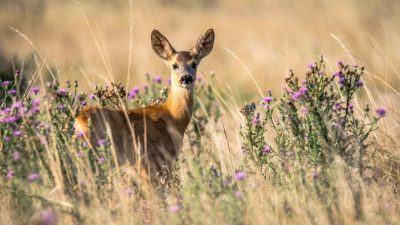
Do not feed wild animals – it’s generally not good for their health and for their natural behavior.
Protect your food and your waste from animals.
Limit noise and sudden movements.
Watch animals from a distance, and do not try to approach them. If your presence changes an animal’s behavior, you are too close.
Be Considerate of Other Users2
Respect for other trail users includes basic etiquette such as slowing to a walk as you approach or leave other users. Avoid crowding others or traveling at excessive speed when encountering others.
Do not cross fields, pastures or crops. This could damage the land and cause conflicts with farmers.
Safety Recommendations
Bees
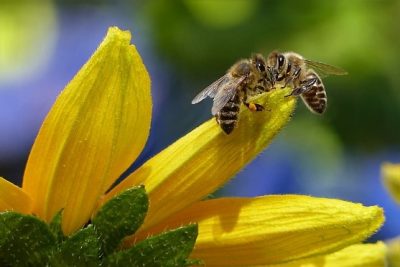
Bees are usually found on the trail from summer to fall with the most dangerous encounters usually from August through September in Connecticut. Bees sting when they feel threatened: it’s their way of defending themselves. During a sting, the sting is usually removed from the bee and remains planted in the skin, causing the death of the bee. Unlike bees, wasps can sting without any real reason. Their sting is firmly attached to their body, which allows them to sting several times.
To avoid getting bitten, follow these tips:
- Avoid any sudden or rapid movement
- Odors, perfumes and other cosmetics attract insects so avoid using them when you go in the wild
Lighting
Choose trails where you have good visibility. Always bring a flashlight just in case. Most rescues occur when a person did not expect to be out after dark and did not bring a flashlight. To preserve night vision and avoid blinding other users, use a flashlight that has a red light feature when you are in an area with other users.
Bring phone
It is strongly recommended that everyone on the trail is equipped with a mobile phone. Thus, in case of emergency, it is possible to call for help or simply to contact someone if necessary. Do not leave the phone on your horse, keep it on your person either through a pouch or some sort of fastening. However, you should not rely on that as your only source of help. Leave an itinerary with someone not with you in case your cell phone battery goes dead.
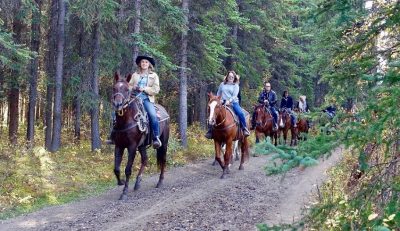
Try to avoid going alone2
Anyone can get hurt on a trail. It’s worth going with a companion or two. You will be safer and more relaxed.
Also, when you leave home, be sure to tell someone when to expect you back and where you might be if you are not back by that time. The sooner someone knows to look for you, the better.
Pepper spray? Positives and negatives
Like anything else, pepper spray is just one self-defense “tool” in your toolbox. It is not a magical solution that will solve every self-defense scenario and should not be relied upon as such.
Pros:
- it is allowed without restriction4 in most states
- it is easily portable, and it is also easy to conceal
- it is generally non-lethal and does not have any long-lasting effects
- it is relatively easy to use
- It is easily available for purchase.
Cons:
- it can be difficult to deploy under stressful violent conditions
- it runs a huge risk for over contamination. Under stress, people who are not trained tend to empty the canister when they deploy it. They generally do not use it in the directed fashion of a small controlled targeted burst. This means that everyone in the area suffers the effects. It may even incapacitate the person who deploys it.
- it’s also possible that the dispensing mechanism can eventually fail as well. As such, you need to replace your pepper spray regularly and at least by the expiration dates to ensure it’s ready when you may need it the most.
Encountering Dogs on the Trail
Dog Behavior
The dog is a predator by nature, although not all dogs have a strong predatory instinct.
Dog Body Language
The dog uses all parts of its body to give information, but particularly its head and eyes, teeth, lips, ears, eyebrows, and various wrinkles. The throat and neck, with their many possible angles and combinations usually confirm other signals. The legs and the torso are mostly used in simple communication.

Recurring behavior:
- Barking; in nature, dogs bark to herald a new arrival or at first signs of possible dangers.
- Jumping up on someone; this is a way of showing dominance
Dog Senses5
Like humans, the dog has five senses: sight, hearing, touch, smell and taste. However, the hierarchy of sensory information is not the same as in humans. It is the sense of smell that dominates.
The visual spectrum is from yellow to blue. Red is not perceived by dogs. In addition, night vision in dogs is excellent and superior to that of man. At a distance, the dog does not clearly distinguish fixed objects, but the dog perceives movements very well even at great distances. On the other hand, the dog field of vision is wider (about 240 degrees compared to 180 degrees in humans).
Whether his ears are drooping or erect, the dog’s hearing is twice as developed as that of humans, the dog perceives higher frequencies as well as ultrasound.

Sensitivity is variable depending on the body part. The concentration of receptors is generally greater in certain areas: vibrissae (whiskers found on a dog’s muzzle, under her jaw line and above the eyes) used for locating in space, brow of the eyebrows, chin, ears, pads, truffles …
Smell is the most developed sense in dogs. It is thanks to his sense of smell that the dog identifies his habitat, other dogs, his diet. Smell plays an important role in communication, sexual behavior and eating behavior. The dog’s sense of smell is 1 million times more effective than that of man.
We can detect the aggressiveness or the fear of a dog according to certain behaviors.
Identifying them makes it possible to anticipate possible danger and thus limit the risk of accidents.
Signs of Aggression in Dogs

A dog shows aggressive signs if he is:
- Becoming very still and rigid
- Barking in a guttural way
- Lunging forward or charging at a person with no contact
- Mouthing, as though to move or control the person, without applying significant pressure
- “Muzzle punching” (the dog literally punches the person with her nose)
- Growling
- Showing teeth
- Snarling (a combination of growling and showing teeth)
- Snapping
- Quick nip that leaves no mark
- Quick bite that tears the skin
- Biting with enough pressure to cause a bruise
- Biting that causes puncture wounds
- Repeating bites in rapid succession
- Biting and shaking
Signs of Fear in Dogs
A dog is afraid when it:
- Has flattened ears
- Has his tail tucked between the hind legs
- Is cowering
- Is lip licking
- Is yawning
- Has raised hair on the back of the neck
- Is avoiding eye contact/averting the eyes
- Is scratching itself frequently (when he was not previously itchy)
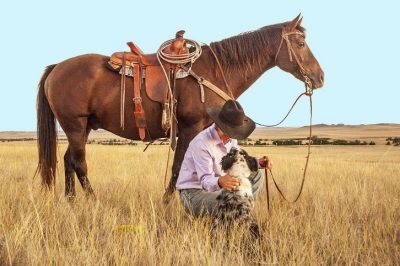
How to Pass a Dog on the Trail
When you pass a dog or several, it is essential to know the right gestures so that everyone is safe:
- Let the dog and owner know you are coming
- Give the dog space, avoid approaching too closely
- Ask the owner before petting the dog
Dogs on leash
Pets are allowed in all national forests but must be kept on a leash no longer than 6 feet at all times while in developed recreation areas and on interpretive trails.
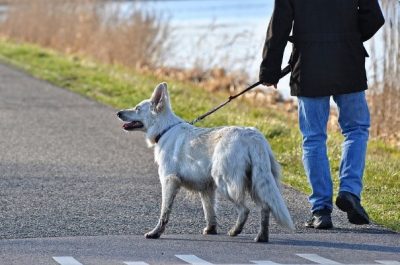
Dog Feces information
Owners should pick up the feces of the dog when it is located in the middle of the trail. However, as with horses, dogs can be taught to defecate off to the side.
Dog feces may contain toxoplasmosis (so can other domestic pets like cats). It could be transmitted to human by touching soil and not washing hands!
Horses on the Trail
Basic Horse Behavior6,7
The horse, prey animal, depends on flight for its survival. His response time is very fast. He must react instantly to a perceived predator to survive. However, horses can learn to be insensitive to scary stimuli. They must learn what is harmful (predators, etc.) and harmless (birds, big rocks, etc.)
Horses are social animals. Hierarchies are present in the social order of horses. Dominance is generally established through aggressive or submissive behaviors or through attitudes that let the other horses know that hierarchy must be respected.
Horse Body Language8
The first thing likely to be noticed about a horse’s expression is the position or movement of its ears. They are the most mobile and expressive feature. You have to learn to watch them to know what he or she is thinking.
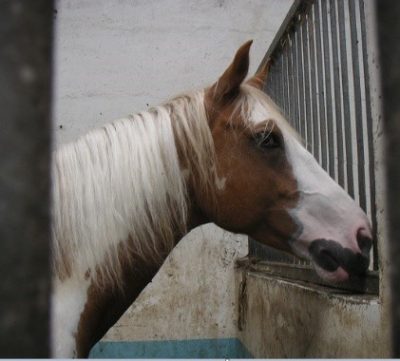
Ears forward, the horse is interested.
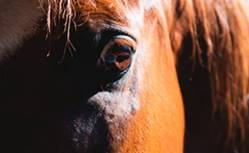
Fearful: ears held stiff with openings pointed directly forward, stiff neck and showing the whites of the eyes means the horse is scared.
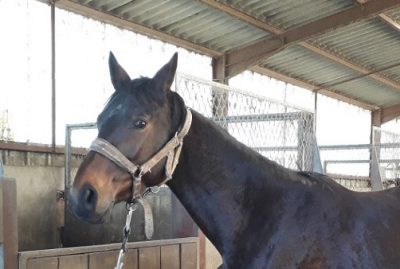
An attentive horse, he often tips one or both ears back to listen attentively.
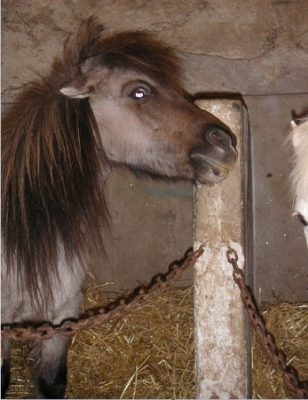
Ears pinned back: The horse is angry and aggressive.
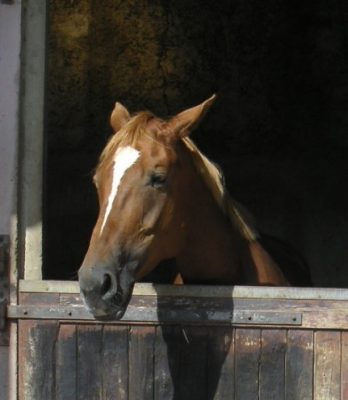
The ears flop out laterally with openings facing down, usually meaning the horse is tired, bored or depressed.
Horses also communicate through postures, gestures and expressions.
Flehmen is a posture that is most often seen with stallions. The animal rolls up his upper lip and stretches his neck and head up. By doing this it allows the air to access the vomeronasal organ. It does this when it wants to analyze pheromones or an unknown odor.
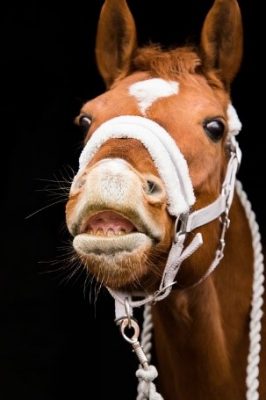
The neck, the tail and the legs are also body signs that we must understand.
If a horse’s tail is:
- High: they are alert or excited
- Low: it is a sign of exhaustion, fear, pain or submission
- Held high over its back: they are playful or are very alarmed
- Swishing: they are irritated or may just be swatting flies
If a horse’s legs are:
- Pawing: they are frustrated
- One front-leg lifted: can be a mild threat
- A back-leg lifted: is often a more defensive threat
- Stamping: indicates a mild threat or protest (or they may be getting rid of insects or flies biting their legs).
Senses of the Horse
- Vision9,10
Horses have dichromatic vision; color vision is quite limited in the horse: it sees shades of yellow and gray.
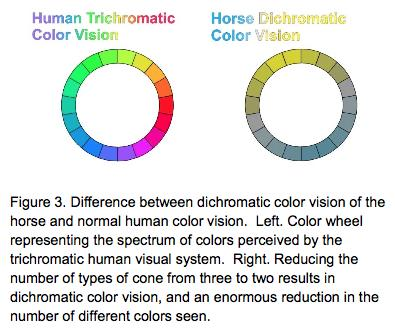
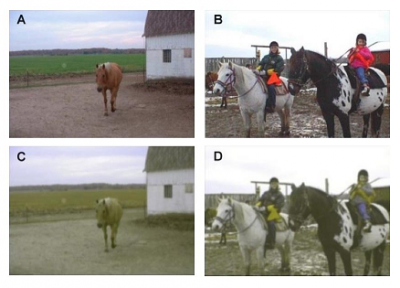 Diagram and photos are from: Carroll, J., Murphy, C. J., Neitz, M., Ver Hoeve, J. N., Neitz, J. (2001). Photopigment basis for dichromatic color vision in the horse. Journal of Vision, 1, 80-87.
Diagram and photos are from: Carroll, J., Murphy, C. J., Neitz, M., Ver Hoeve, J. N., Neitz, J. (2001). Photopigment basis for dichromatic color vision in the horse. Journal of Vision, 1, 80-87.
The eyeball is placed on the side of the head, which gives horses a wider field of vision.
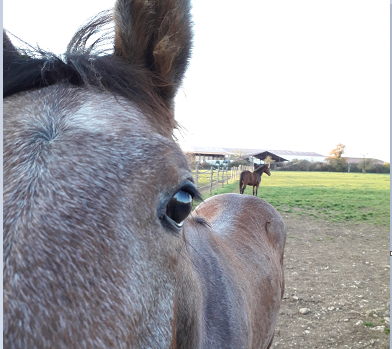 Much of the width of the visual field that horses see is observed with only one eye. This is called monocular vision. When a horse sees an object with its monocular vision, it will tend to turn toward it so that both eyes can see it (with binocular vision).
Much of the width of the visual field that horses see is observed with only one eye. This is called monocular vision. When a horse sees an object with its monocular vision, it will tend to turn toward it so that both eyes can see it (with binocular vision).
Despite the vast field of vision, there is a blind spot directly behind the horse and right in front of him. People should avoid approaching a horse here, as their presence is most likely to be detected too late, which could frighten him.
Night vision is good in the horse because of the proportion of photoreceptors in the retina. In the wild, night grazing accounts for 20 to 50% of daily grazing time.
The perception of depth and distance is one of the most important visual functions for any animal that has to move in its environment. For horses, this sense is not so developed. He cannot tell the difference between depth of a deep river and the water in a water bottle. That’s why when you cross a stream, it is best to let him fully look the obstacle before crossing it.
Hearing, horses are able to hear from 14 Hz to 25 khz (whereas human is from 20 Hz to 25 khz) and from 0 to 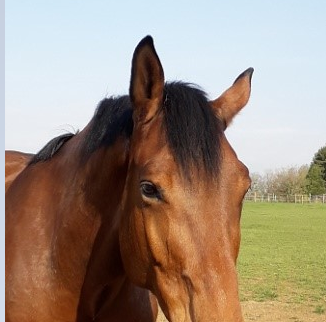 80 decibels
80 decibels
Hearing serves three primary functions:
-
-
- Detect sound
- Determine location of sound
- Provide sensory information that allows horse to recognize the identity of these sounds
-
How to Pass a Horse on the Trail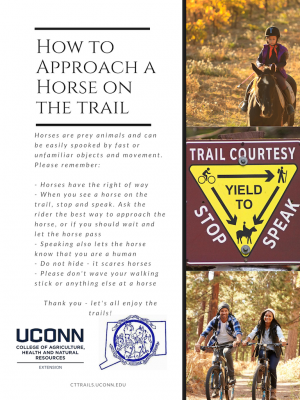
When you pass one horse or several, it is essential to know the right thing to do so that everyone is safe:
- Let the horse and rider know you are coming
- Give the horse space
- Avoid “hiding”
- Keep ski poles on the ground, avoid waving objects
- If you have a dog, keep him on a leash
Respect for other horsemen includes basic etiquette such as slowing to a walk as you approach or leave other horses, always keeping your horse secure, and letting others know a horse has a tendency to kick by putting a red ribbon it its tail.
Courtesy for other recreational trail users is even more crucial. Keep your distance from the general crowds as much as possible. You are likely to encounter people who don’t know how to behave around horses.
Always be polite.
Manure is biodegradable
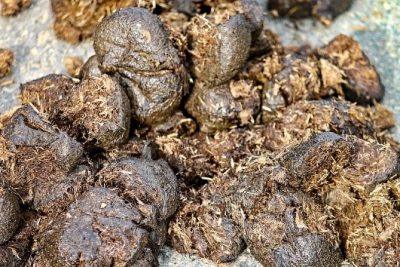 Horse manure is free of micro-organisms that infect humans. Parasites that infect horses are not dangerous for humans. Parasites that infect horses are not dangerous to humans. In particular, you can’t find Cryptosporidium or Giardia in horse manure.
Horse manure is free of micro-organisms that infect humans. Parasites that infect horses are not dangerous for humans. Parasites that infect horses are not dangerous to humans. In particular, you can’t find Cryptosporidium or Giardia in horse manure.
Up to 80% of the water in the manure is evaporated or infiltrated in the soil, the rest is undigested parts of plants.
EPA excludes manure from solid waste regulations because it does not contain hazardous chemicals and has no hazardous characteristics.
Although manure is biodegradable, it is offensive to some trail users. Equestrians are encouraged to clean up after their horse on multi-use trails with high volume.
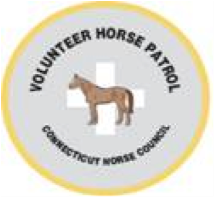 Brief overview of CT Volunteer Horse Patrol including use statistics
Brief overview of CT Volunteer Horse Patrol including use statistics
The Connecticut Horse Council (CHC) partnered with Dept. of Energy & Environmental Protection (DEEP) in 2003 to create the Volunteer Horse Patrol (VHP) to ride and serve in state parks & forests.
This program helps to protect and preserve the trails of the state of Connecticut. Since its beginning, the Patrol expanded to include land trusts, open spaces, town lands, city parks and private lands
The group’s primary responsibility is to observe what is happening on the trails. Community service is provided to landowners in exchange for their ability to use their trail.
For 14 years, members have recorded statistics on activities they have encountered, volunteer patrol and trail maintenance hours and assistance provided to other trail users. These include trail etiquette education, instructions to those who are lost or confused and first aid.
Shocking Statistics
- 15 year history
- 38,043 hours of patrol over 14 years
- 88 areas throughout the state
- 14-year statistics collected from:
- 21 state forests
- 28 state parks
- 7 Wildlife Management Areas
- 9 land trusts
- 15 town and open spaces
- 8 private lands

Recorded Visitors without Motorbikes or ATVs 2003-2016 :
*People are those noted doing other activities, including fishing, swimmers, kayakers, picnickers, campers, bird watchers, photography, snowshoes, skiers, etc
Collected data show a large number of horses utilize state, town, and private lands, and work to patrol and maintain trails:
- 7% of trail users recorded were equestrians
- Over the 14-year period there were 33,357 horses out on the trail during the patrols and an average of 1.75 other horses per patrol
Contact info
Dr Jenifer Nadeau, Associate Professor, Equine Extension Specialist, University of Connecticut
Camille Guérineau, graduate student and summer intern
camille.guerineau@agrosupdijon.fr
This document was created during the internship of Camille Guérineau from AgroSup Dijon from April to August, 2019 at the University of Connecticut’s Department of Animal Science under the supervision of Dr. Jenifer Nadeau, Equine Extension Specialist and Associate Professor. We would like to sincerely thank the involvement of many of those involved with the CT horse industry who provided input and photos to make this possible as well as Laura Brown, chair of the PATHS Team and Community & Economic Development Educator with Uconn Extension and Certified Economic Developer (CEcD). Also thanks to the other PATHS Team members for their help and support.
We also thank Michelle Lewis, Cynthia Chotkowski, Kristen Govoni, Jen Otis, Peter von Halem, Charlotte Gelston, Anne Zagryn and Steven Mazeau for having contributed to the creation of these web pages by providing us with their photos.
References
1 Leave no trace : https://lnt.org/why/7-principles/, consulted the 05/19/2019
2 EQUUS 356, May 2007,p 77 à 85, Take the trail rider’s Pledge by Gene Wood, PhD, with Laurie Bonner, consulted the 05/23/2019
3 Environmental Impacts Associated with Recreational Horse-riding, David Newsome, David N. Cole and Jeffrey L. Marion, consulted the 05/23/2019 http://winapps.umt.edu/winapps/media2/leopold/pubs/517.pdf
4 State regulations – https://www.pepper-spray-store.com/pages/states, consulted the 05/24/2019
5 CLINIQUE VETERINAIRE DU CRES_ Les 5 sens du chien consulted here 1/23/2025
6 Carey A. Williams, Ph.D., Extension Specialist in Equine Management, https://esc.rutgers.edu/fact_sheet/the-basics-of-equine-behavior/, consulted the 05/24/2019
7 Understanding horse behavior, Agricultural Extension Service Institute of Agriculture, consulted the 05/25/2019
8 Horse body language, http://www.angelfire.com/tx2/kidshorses/bodylang.html, consulted the 05/25/2019
9 Franck OLLIVIER, Docteur Vétérinaire, Diplômé ACVO et ECVO, http://www.animaleyedoctor.fr/article-veterinaire-1-2-la-vision-du-cheval, consulted the 05/25/2019
10 Ifce, https://equipedia.ifce.fr/sante-et-bien-etre-animal/bien-etre-et-comportement-animal/perception-et-comprehension/la-vision-du-cheval.html, consulted the 05/25/2019
Photographies from pixabay
